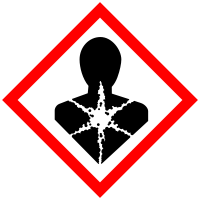
Photo from wikipedia
The toxicity of petroleum can increase considerably after exposure to solar radiation, during which certain components in the mixture, including polycyclic aromatic hydrocarbons (PAHs), absorb light in ultraviolet and visible… Click to show full abstract
The toxicity of petroleum can increase considerably after exposure to solar radiation, during which certain components in the mixture, including polycyclic aromatic hydrocarbons (PAHs), absorb light in ultraviolet and visible portions of the solar radiation spectrum. A phototoxic target lipid model (PTLM), previously developed to predict the phototoxicity of single PAHs, is validated for 4 species (Americamysis bahia, Rhepoxynius abronius, Daphnia magna, and Pimephales promelas) exposed to 12 compounds that are components of petroleum, including alkylated PAHs and dibenzothiophene. The PTLM is also used to predict the phototoxicity of binary and ternary mixtures of 3 PAHs, pyrene, anthracene, and fluoranthene, to A. bahia and Menidia beryllina. Finally, it is used to predict the toxicity of water accommodated fractions of neat and naturally weathered Macondo crude oil samples from the Deepwater Horizon oil spill sites. The Gulf of Mexico species, including A. bahia, M. beryllina, Cyprinodon variegatus, and Fundulus grandis were exposed to the oil samples under natural and simulated solar radiation. The results support the applicability of the PTLM for predicting the phototoxicity of petroleum. Environ Toxicol Chem 2018;37:2165-2174. © 2018 SETAC.
Journal Title: Environmental toxicology and chemistry
Year Published: 2018
Link to full text (if available)
Share on Social Media: Sign Up to like & get
recommendations!